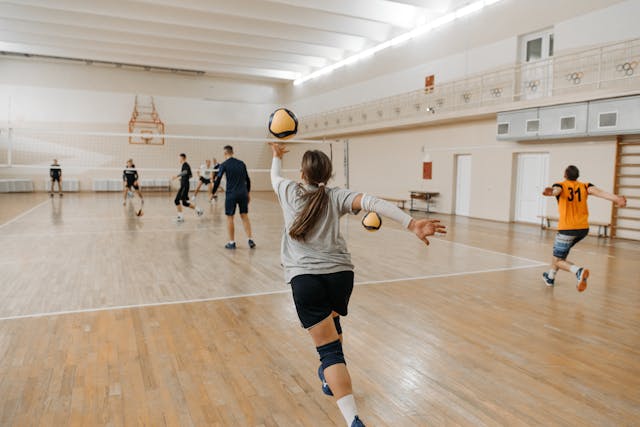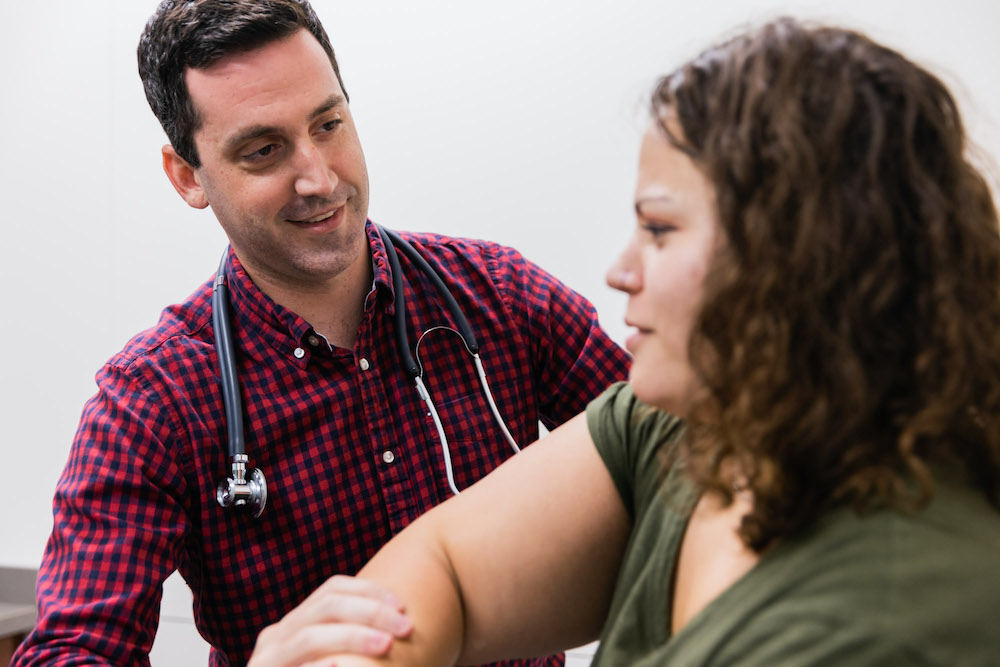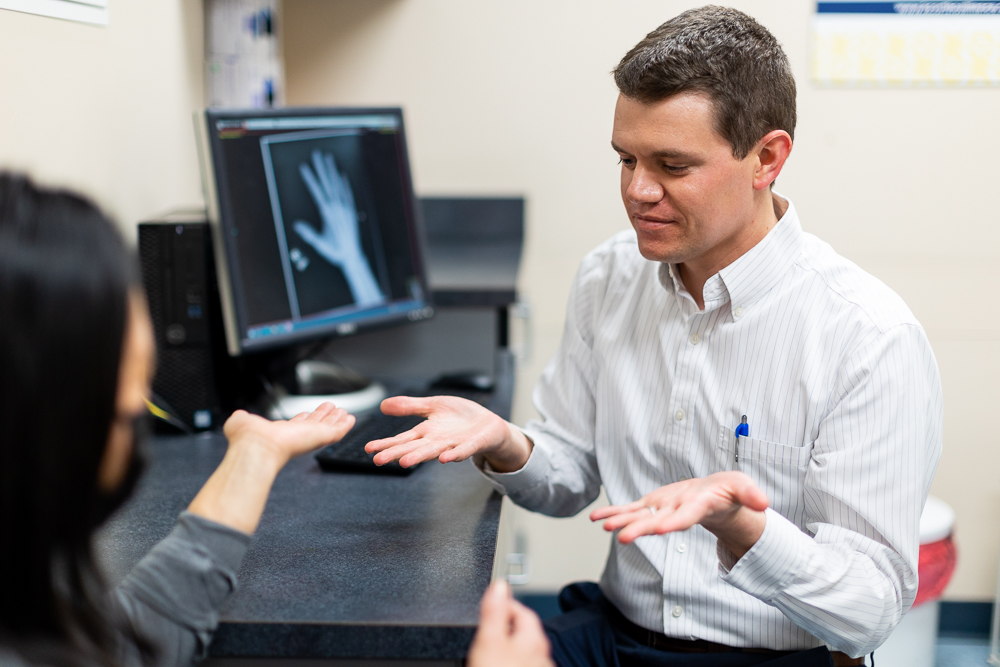
High school and college athletes are gearing up for the fall sports season, but injuries can be a major concern without adequate prevention measures. No matter what sport you play, anyone is vulnerable to injury. From football to cross country, taking care of your injuries means you can perform to the best of your ability.
Whether you’re a seasoned student athlete or just someone who enjoys recreational sports, injuries are an unfortunate risk. From sudden impacts to repetitive movements, sports injuries can happen to anyone. Recognizing the most common types of injuries can help you take preventive measures and seek treatment promptly if necessary.
At Kansas City Orthopedic Alliance (KCOA), our expert team at our orthopedic clinics provides the highest standard of care for athletes and active individuals. To help you avoid and treat any potential injuries as you begin the new season, we’ll discuss the five of the most common sports injuries, what causes them, and how they are typically treated.
Sprains and Strains
Sprains and strains are among the most common injuries for athletes in all sports and can occur in almost every joint or limb. These injuries involve the stretching or tearing of ligaments (sprains) or muscles and tendons (strains).
- Common causes: Sudden twists, falls or awkward movements often result in sprains or strains. Athletes in contact sports like football or basketball are particularly vulnerable, but they can occur in virtually any sport.
- Symptoms: Symptoms include pain, swelling, bruising and difficulty moving the affected area.
- Treatment: The RICE method (rest, ice, compression, elevation) is the first line of defense. In more severe cases, physical therapy or surgery may be required to repair torn ligaments or tendons.
KCOA’s expert orthopedic providers specialize in diagnosing and treating sprains and strains to ensure you get back on the field, representing your school safely. Request an appointment here.
Knee Injuries
Knee injuries happen to all kinds of student athletes, especially those involved in sports that require running, jumping or sudden shifts in movement, such as soccer, football, basketball and tennis. These injuries can range from minor sprains to severe ligament tears.
- Common causes: Sudden stops, twists, or direct impact to the knee often result in injuries such as meniscus tears, anterior cruciate ligament (ACL) injuries, or patellar tendinitis (jumper’s knee).
- Symptoms: Knee pain, swelling, instability and difficulty bearing weight on the affected leg are common signs of a knee injury.
- Treatment: Treatment varies depending on the severity of the injury. Minor knee injuries may heal with rest, while severe cases, such as ACL tears, may require surgical intervention accompanied by physical therapy.
If you’re searching for the best orthopedic doctors near you to assist with chronic or urgent knee injuries, our orthopedic surgeons are leaders in the field, offering advanced treatment options. Request an appointment here.
Shin Splints
Shin splints, or medial tibial stress syndrome, are common among runners and student athletes who participate in high-impact sports like cross-country. They cause pain along the front of the lower leg, specifically the shin bone.
- Common causes: Overuse and repetitive stress, especially in sports that require running on hard surfaces, are leading causes of shin splints.
- Symptoms: Dull, aching pain in the lower leg that intensifies with activity and eases with rest is a key sign of shin splints.
- Treatment: Rest, ice, and anti-inflammatory medications can help reduce pain and inflammation. Proper footwear, bracing, utilizing inserts and adjusting training routines can prevent shin splints from recurring, too.
At KCOA, our providers offer tailored treatment plans to alleviate shin splint pain and help you avoid future injuries.
Shoulder Injuries
Shoulder injuries are common in sports that involve repetitive overhead movements, such as swimming, baseball and tennis. The rotator cuff and labrum are particularly vulnerable to injury in these cases.
- Common causes: Repetitive motions or direct trauma can cause shoulder injuries, including rotator cuff tears, labral injuries, dislocations and strains.
- Symptoms: Symptoms of a shoulder injury include pain, weakness, and limited range of motion. You may also feel a popping sensation or experience instability in the shoulder.
- Treatment: Rest, physical therapy, and anti-inflammatory medications are standard treatments. In severe cases, surgery may be necessary to repair torn ligaments or tendons.
If you’re searching for the best orthopedic surgeon near you then KCOA’s orthopedic experts specialize in advanced surgical and non-surgical treatment options for shoulder injuries.
Tennis Elbow (Lateral Epicondylitis)
Tennis elbow isn’t just reserved for tennis players. Anyone who engages in repetitive arm motions can develop this condition. It occurs when the tendons in the elbow are overworked, leading to pain and tenderness on the outside of the elbow.
- Common causes: Repetitive arm movements in sports like tennis, golf and even weightlifting can strain the tendons in the elbow, leading to inflammation and pain.
- Symptoms: Pain and tenderness around the elbow, weakness in the forearm, and difficulty gripping objects are typical symptoms.
- Treatment: Rest, physical therapy, and anti-inflammatory medications are often effective in treating tennis elbow. In severe cases, surgical intervention may be necessary.
Our KCOA clinics provide comprehensive care for sports-related injuries like tennis elbow, helping you recover and regain strength.
When to See a Specialist
If you’ve sustained any of the injuries mentioned above, then it’s essential to seek treatment from a qualified orthopedic specialist. At KCOA, our experienced team is equipped to diagnose, treat and help prevent sports injuries from sidelining you.
Whether you need rehabilitation for a strain or surgery for a severe injury, we’re here to help you recover quickly and safely. No one wants to be on the bench. That’s why we’ll help you get back in the game as soon as possible.
For more information or to schedule an appointment, reach out today. We’ll connect you with the best orthopedic doctors to get you the care you need.


